Room 3 has been learning about Multiplication. Here is a snapshot of the students’ representations of a problem.
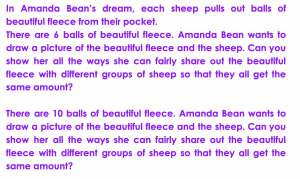 .
. 

Room 3 has been learning about Multiplication. Here is a snapshot of the students’ representations of a problem.
 .
. 

This week we are learning all about us. What we like about ourselves on the inside and out. We have been practising our self portraits ready to publish them later this week. 

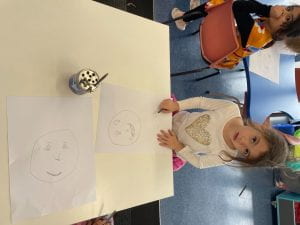

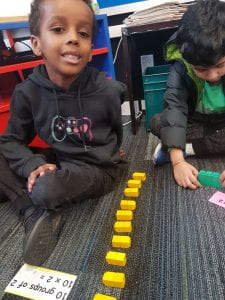

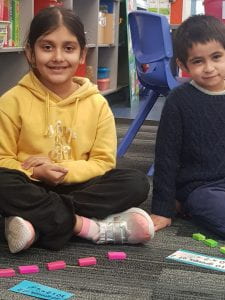
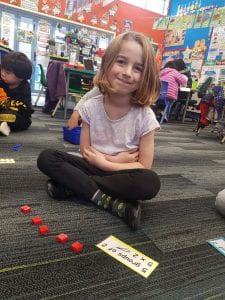
Room 5 has been working with Miss Tan (student teacher) to make feathers for a class Korowai. We learnt about how feathers protect and keep birds safe, and how they come in all different shapes and sizes. Just like us, we are all unique, come in different shapes and sizes and we as room 5 will keep each other safe and protect each other.
We learnt about colour mixing, primary and secondary colours, and warm and cool colours with paint. It was challenging but fun!
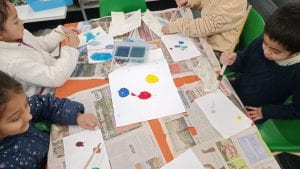
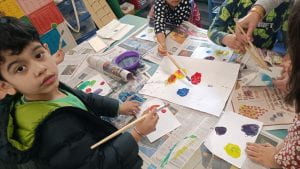



Room 1 has been working hard in Math time. We have been learning how to make patterns on our peg boards, counting to ten and matching it with the numeral and making groups of two.
We have also been focusing lots on sharing, sharing the equipment, the pencil and more importantly our ideas.




Inspired by Kandinsky’s Art, we created our Calendar Art.
Some of us used paint and some used dye for our background. We then layered colour paper for the circles and used vivid for the stems and patterns around the circles.
We are so pleased with our product.
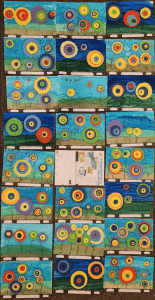
Last week, New Zealand as a nation marked the first public holiday for Matariki. Matariki is a time to reflect on the past, celebrate with whanau and look forward to the future.
Kites have always played an important role in Māori culture, particularly during the winter season when they were flown to signify the start of Matariki, the Māori New Year.
Room 3 created some beautiful kites, and stars and enjoyed a yummy Kai, sausage sizzle to signify and acknowledge the celebration.
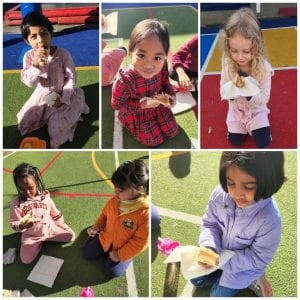
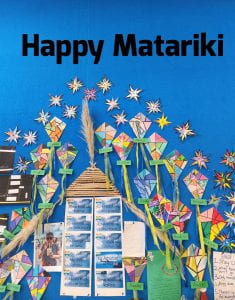
In Room 6 we have been discussing the advantages and disadvantages of plastic in our world. On the one hand, plastic is great because it is a durable, hardwearing material that can last a long time. We can use it for storage containers, toys, furniture and so much more. On the other hand, plastic is not so great for exactly the same reason, it is durable and lasts for a long time. This means when we throw anything plastic away, it does not break down like food scraps or organic matter like wood. It stays around for many, many years. We read the story Celia Seagull and the Plastic Sea and discovered how lethal plastic can be to sea creatures.
One day after lunch we decided we would see how much plastic litter we could find around the school. The results were shocking.
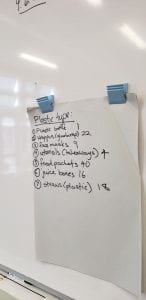 .
. 
With the help of Miss Eve, our student-teacher we sorted the rubbish into different piles. There were lots of plastic yoghurt containers, chippie packets, drink cartons with straws and spoons and forks. We then spoke about how we could reduce the amount of plastic being used and then dumped. We thought about how wasteful it is to have small packets of snacks and lollies when you can buy a big bag and share it out into smaller reusable containers.
We looked at 12-year-old Lauren Greer’s invention, the Rubbish Taniwha https://www.stuff.co.nz/environment/115404552/girls-rubbish-taniwha-reveals-silage-wrap-pollution which collects rubbish in our waterways. We then designed our own machines for collecting rubbish.
What could you do to save our environment from too much plastic?

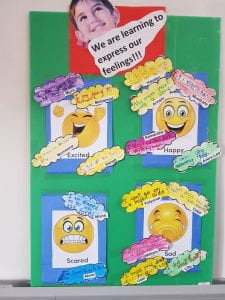

Kia ora whānau! We have been thoroughly enjoying our Structured Literacy sessions this term. We agreed that it was time for us to challenge ourselves, and so we thought we should get our iPads out of the cupboard (do they even really stay in there anyway?).
During our last couple of Structured Literacy lessons, we have been focusing on the sounds 🐍 and 🍎, and we have been working on retelling and acting stories like ‘Brown Bear, Brown Bear, What Do You See?‘. We thought that this would be a great opportunity to try and use Explain Everything to share our learning with our wonderful readers.
Here are two short videos of Hamza and Ahmed revisiting the story of ‘Brown Bear, Brown Bear, What Do You See?‘.
Hamza’s version of the story:
Ahmed’s version of the story:
Stay tuned for more, we are super duper excited to learn what else we can do with our iPads this year. We hope you are too!